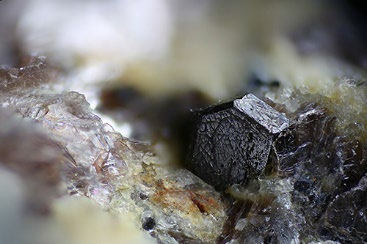Listen Now
SME Statement
Currently, thorium, a radioactive element, is produced as a byproduct of monazite from mineral sands. Monazite is generally produced to recover rare earth elements (REE) that are used in alternative energy sources, such as wind and solar. Other types of deposits such as REE-bearing carbonatites can also have elevated thorium concentrations that must be recovered or disposed of. REEs, in addition to other uses, are essential both for producing electric vehicles and batteries. The mineral sands industry provides a variety of products, some of which are also critical minerals, such as zircon and titanium. Although not all REE and mineral sands deposits contain significant thorium, many do, and any excess quantities of thorium recovered during REE and mineral sands mining that are not utilized as thorium must be handled and stored in specially designed impoundments.
Currently, 90 to 98 percent of REE, both in the form of rare earth oxides and refined metals and alloys is produced by China (78%) and other countries. Additional production of REE will be required to meet increasing demand and to create a more competitive worldwide market supply. Increasing demand for other commodities is expected to also increase the production of mineral sands. As this increasing demand for REE and other commodities is met, additional quantities of thorium will likely be produced.
Issue
Although there are potential uses for the produced thorium, currently there is a limited market for it. However, in the longer term, additional beneficial uses for thorium could be developed which would increase demand. Since thorium is radioactive, it will be necessary to safely store the excess thorium produced in properly designed and managed radioactive impoundments.
Domestic demand for thorium is limited. Commercial uses of thorium included research applications, catalysts, high-temperature ceramics, magnetrons in microwave ovens, metal-halide lamps, nuclear medicine, optical coatings, tungsten filaments, and welding electrodes.
However, the production of increasing amounts of excess thorium from REE and mineral sands deposits will require long-term solutions. Specific solutions to dealing with the excess thorium to be produced include the following:
- In the short to medium term, thorium or high-content thorium material and other radionuclide waste will need to be safely stored at the mine site or other properly designed facility. These materials will require appropriate characterization and facility design to ensure that materials do not become fugitive and cause harm/damage to the local populace, water table, and the environment surrounding the mine and storage facility site.
- Thorium or high-content thorium ore and other radionuclides will need to be separated and transported to appropriately designed, licensed, and permitted radioactive waste storage facilities.
- In the longer term, additional beneficial uses for the excess thorium could be developed.
Background

Monazite, zircon, thorite, allanite, and astnäsite mineral deposits, in addition to REE, in some instances, contain radionuclides, including uranium, thorium, and radium. Mineral sand deposits that contain monazite also can contain significant thorium.
With increased production of REE, there is likely to be an increased production of radionuclides, including thorium. Uranium produced can be marketed but the sale of thorium will be limited due to the small market.
Energy usage of thorium may be the most promising long-term option for the consumption of excess thorium. Research on thorium nuclear reactors continues at the experimental and pilot stage. Large research programs in Asia, especially China, underline the advantages of thorium nuclear reactors for nonproliferation, reduced CO2 emissions, and reduced radiotoxicity. Thorium power, as a subset of the global nuclear industry, other than the substantial research and development costs already incurred by conventional nuclear, faces most of the same constraints as conventional nuclear power.
Several public or private corporations have an interest in exploring new technology using thorium. One way of dealing with excess thorium is to develop a beneficial use for the excess thorium. TerraPower, founded by Bill Gates and others, is exploring a new reactor technology as well as thorium molten-salt reactors. Initial timelines were for commercialization by 2030 but this will likely be delayed. While thorium nuclear power will not likely become a reality by 2030, there is a chance, with government and private investment sustained at the current levels, that by 2050 there could be commercially viable thorium power.
The outlook on non-energy thorium usage is poor. The U.S. Geological Survey has stated that high disposal costs, increasingly stringent regulations, and public concerns related to thorium’s natural radioactivity are expected to continue to discourage its use in global non-energy applications.
SME Statement of Technical Position
- SME encourages the production of REE and mineral sands from domestic resources to meet REE and the demand for other critical minerals.
- SME supports proper storage, handling, and controls in supporting the use of thorium. The market will decide if thorium will become a viable energy source.
Download PDF
